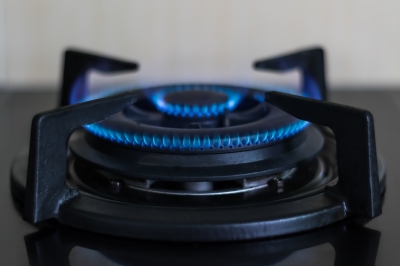Does Romania have gas only for one decade?
The draft Energy Strategy of Romania was completed this week. Before discussions on the substance, I believe it is necessary to treat a widely debated statement after the apparition in the public space of the document: Does Romania have gas only for one decade?
Geological gas resources (excluding those in the Black Sea), according to the draft Energy Strategy, are estimated at approximately 700bcm, but proven, probable and possible reserves are estimated at approximately 150bcm.
Proven reserves represent only a part of the gas resource, being characterized by the fact that it can be actually extracted in feasible conditions, given the current level of gas prices in the market, costs with the exploration and exploitation of fields, royalties, special taxes etc.
Any change in these elements theoretically makes proven, probable and possible reserves to increase or decrease. For example, it is possible that a larger part of the existing gas resource become profitable to be exploited and in this way to witness an increase in the proven reserve and, respectively, to witness an increase in the number of years during which “gas would cover consumption in Romania”.
Today, reporting proven reserves feasible at the existing gas production shows that proven, probable and possible reserves would be enough for a period of approximately 12 years (at a consumption of around 12 billion cubic meters of natural gas).
I believe this indicator should be circulated only accompanied by assumptions in which it was calculated.
Consequently, the sufficiency of gas in Romania (the number of years during which Romania can cover its consumption from the production held) is influenced by, without limitation to the following situations:
- increase in exploitation costs due to age of fields, increase in the level of royalties and increase in taxes will determine a reduction of proven, probable and possible gas reserves and implicitly a reduction of the number of years during which gas would be enough (keeping the consumption, production, import level, lack of gas export would determine the potential number of years in which production would cover consumption in Romania to be around 13 years);
- decrease in gas consumption (in absence of export and import of gas) would determine an increase in the number of years during which gas would be enough (at the same prices, royalties, taxes etc. it would determine that the possible number of years during which production would cover Romania’s consumption to be around 16 years);
- increase in gas imports at a constant consumption and in absence of gas exports would determine an increase in the number of years during which gas would be enough (at the same prices, royalties, taxes etc. it would determine that the possible number of years during which production would cover Romania’s consumption to be around 17 years);
- lack of re-engineering of the transmission system, in conjunction with the decrease in the pressure of fields, due to a high degree of depletion, will determine the reduction of the possibility to transport gas for large distances or the possibility to take over gas in the future high-pressure gas mains, which will determine a potential reduction of production, respectively would determine an increase in the number of years during which gas would be enough (at the same prices, royalties, taxes etc. it would determine that the possible number of years during which production would cover consumption in Romania to be around 19 years, with the mention that an important part of consumption will have to be covered from imports);
- gas export, in the limit of amounts determined by surplus of gas during the warm period, would determine the reduction of the number of years during which gas would be enough (at lower market prices, higher royalties, higher taxes etc. and without entry of amounts from import, it would determine that the possible number of years during which production would cover Romania’s consumption be around 9 years);
- there is also an optimistic scenario of Smart Energy, in which increasing energy efficiency, obtaining efficient energy, increasing the amount of renewable energy in the primary energy balance, large scale development of pro-consumers, recovery of secondary energy, imposing systems of co- and trigeneration, using for energy purposes green waste and garbage, using the low pressure gas and manufactured gas, extraction and use of thermal and kinetic energy of fluids circulating through pipelines or ducts, zero-energy buildings, interchangeability and duality of fuels, in conjunction with the development of geological research and pre-conservation of existing resources allows a significant increase in the number of years during which gas would be enough (at the same prices, with the entry of significant amounts of gas from import in periods with very low prices on international markets; it would determine that the possible number of years during which production would cover consumption in Romania be up to 60 years).
This indicator is an important indicator for setting fiscal policies (in the gas sector), energy policies and especially security policies (regarding energy), policies which influence it, but should not be used improperly because it can generate panic for no reason.
In conclusion, depending on the evolution of the gas market (price and consumption), Romania’s interconnections with other states and real export possibilities, interchangeability of energy forms, but especially adaptation of policies (energy and fiscal) to these realities, but also to the strategic objectives of Romania, the number of years during which gas (except gas from the Black Sea) can determine that the number of years during which gas is enough (to entirely cover in theory Romania’s gas consumption) be lower or higher than 10 years.
Translated from Romanian by Romaniascout.
Image courtesy of Stoonn atFreeDigitalPhotos.net



Recent Comments